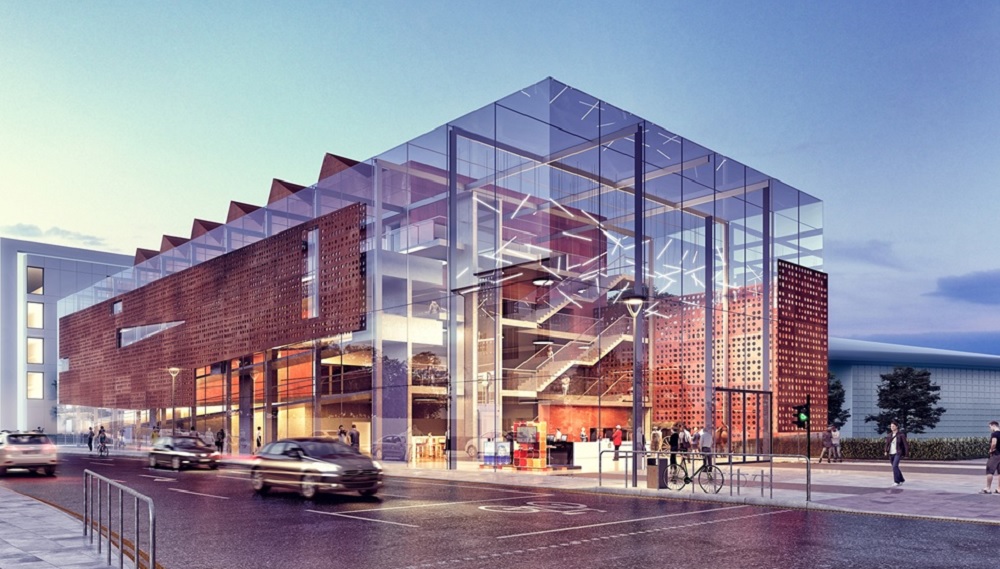Concerns about financial viability of proposed Military Medicine Museum in Cardiff Bay

The financial viability of controversial plans for a Military Medicine Museum in Cardiff Bay have been called into question amid growing objections to the scheme from residents and community groups.
The museum currently based at a military barracks in Aldershot received a £2 million Treasury grant to fund its move to a new purpose-built 5-storey building in Cardiff in 2022.
In a bid to calm the controversy over the project, Cardiff Council leader Huw Thomas ruled out Council subsidies for the relocation or running costs.
But residents have raised concerns with the Council that it could end-up like the Dr Who experience, which was forced to shut due to low visitor numbers despite a £1 million council subsidy.
“If public subsidy is not provided, there is a serious risk that the Museum will not be viable and will have to close, leaving an empty building on what is today a valued park. It may not even be completed,” wrote Lyn Eynon, a Labour activist, in a detailed 32-page document submitted to the Council’s consultation.
The museum trust’s accounts show it made a loss of £163,000 last year with the majority of its income made up of donations and legacies, has just five staff and free reserves of only £15,000.
Its business plan for the move is based on attracting 225,000 paying visitors annually by its second year.
That is substantially more than Techniquest, the science centre in Cardiff Bay, which received 153,500 visits in 2018 and the Museum of Cardiff in the city centre, which attracted 133,421.
Mr Eynon pointed out the US Army Medical Museum based in Washington, D.C. only attracts 50,000 visitors a year despite providing free entrance and free parking.
“Unless and until the Museum Trust can provide a robust, convincing, publicly transparent, long-term business plan that shows its financial viability, neither Cardiff Council nor Welsh Government should make available any land or provide other support for this project,” he concluded.
Tyra Oseng-Rees, chair of the Welsh Norweigan Society, wrote: “We share the concerns of the Friends of Britannia Park and Cardiff Civic Society that this project is not financially viable without considerable public subsidy.”
Resident Lynn Hughes added: “How is it going to fund itself without significant subsidies and where will the funding come from? If it has any commercial intentions it will need to be in a much more accessible place to support enough visitors willing to pay.”
The museum’s business plan states: “a mix of conferencing, retail, catering, admissions charging, temporary exhibitions, events, and venue hire is being planned, and educational programmes and innovative research partnerships will all contribute to the long-term viability of the project.”
‘Unnecessary’
To date the council has received 30 objections to the project, including from Butetown’s only councillor, as well as a petition of residents against the plan and letters of concerns.
Planning documents consulted by Nation.Cymru reveal the scale of local opposition to the scheme, particularly over the loss of green space caused by construction on the site of a park.
In a letter sent “on behalf of the residents of Butetown”, Labour councillor Saeed Ebrahim wrote: “Local residents are concerned about the impact on Britannia Park as well as the loss of grassed area and trees, the large building will dominate the park and overshadow what is left.
“The children’s play area would be affected. It is unnecessary to build over the park when there is empty public wasteland nearby.”
He added: “At five storeys high, the building will tower over the Norweigan Church, providing an unsightly background for iconic views across the Bay that are used to promote our city.”
Cardiff Civic Society also cites the “unacceptable loss of open space” as a reason to reject the plan, saying the Council committed to maintaining it as part of the redevelopment of the area in the 1990s.
Cardiff already has 394 hectares less open space than recommended by national guidelines, according to the Council’s own assessment. And, of Cardiff’s 28 wards, Butetown has the fourth-lowest level of formal open space.
“There are many vacant sites within the Bay, the Dr Who site for one, but this is the only park,” wrote resident Mary Davies. “At this time of severe climate change we need all the green space and trees within it that we have.”
Asbri Planning, which is advising the museum on the move, has argued the scheme will “not result in a significant loss of open green space” but “improve the space” in a response to the criticism.
The Council’s planning committee has not yet set a date for its final decision over the scheme.
Support our Nation today
For the price of a cup of coffee a month you can help us create an independent, not-for-profit, national news service for the people of Wales, by the people of Wales.





